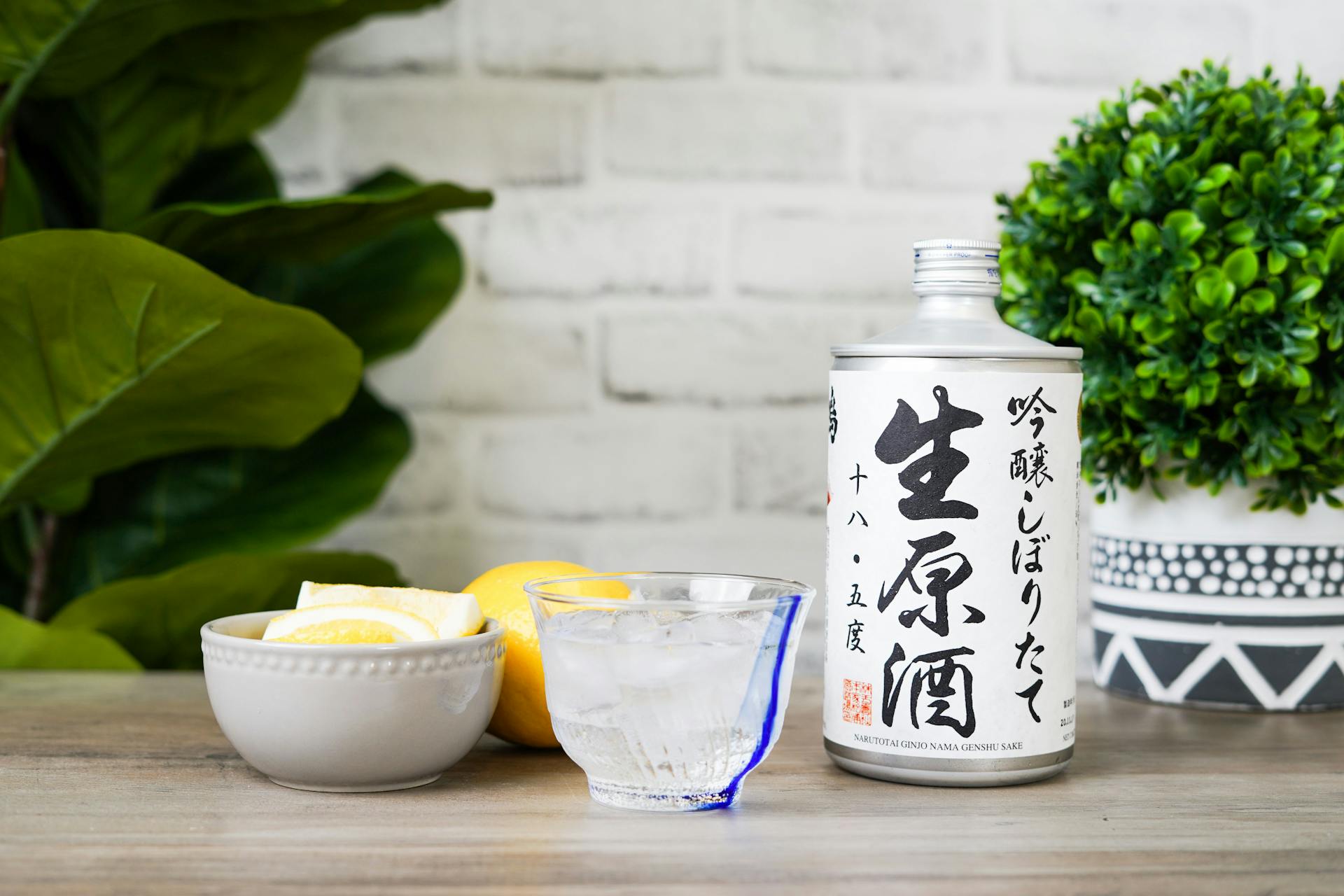What Is Nama Sake?
Table of Contents
- 1. What is nama sake (namazake)?
- 2. How is sake pasteurized?
- 3. What’s the difference between namanama, namachozo and namazume?
- Namanama sake
- Namachozo sake
- Namazume sake
- 4. How to store and serve nama sake
- 5. How to choose the right nama sake for you
- Gasanryu “Kisaragi”
- Kikusui “Funaguchi” Sparkling
- Amabuki “Himawari”
- Narutotai “Ginjo” Nama Genshu
- Nihonsakari “Fuga”
- 6. A raw look at sake
There’s nothing like drinking fresh “namazake” from the brewery tap. As soon as it graces your palate, you get the feeling that it’s somehow alive. Its taste is vibrant and rousing; it wakes the senses with a slightly acidic tingling. What is this magic? Welcome to the enchanting world of unpasteurized sake.
What is nama sake (namazake)?
“Nama” is short for “namanama,” which is a subcategory of sake that does not undergo the two rounds of pasteurization that other sake typically do. The best place to try nama sake is on premises, so we highly recommend you visit sake breweries in Japan (and in the U.S., for that matter). But if a visit to a sake brewery isn’t in your immediate future, Tippsy has a fantastic, varied selection of nama sake that can be delivered to your door. We’ve worked hard to develop positive relationships with Japanese sake breweries to give you access to some of the freshest sake available, and you should absolutely take advantage of it!
But why does skipping pasteurization make nama sake special? As mentioned, most of the sake you’ll find will have undergone two rounds of heat pasteurization: one round after pressing and one round after aging. (Sake is usually aged for at least six months.) The purpose of pasteurization is to stop the brewing process and to eliminate any bacteria that may actively alter the taste of the sake. In other words, it preserves the sake’s flavor at a certain point and allows it to be more shelf stable.
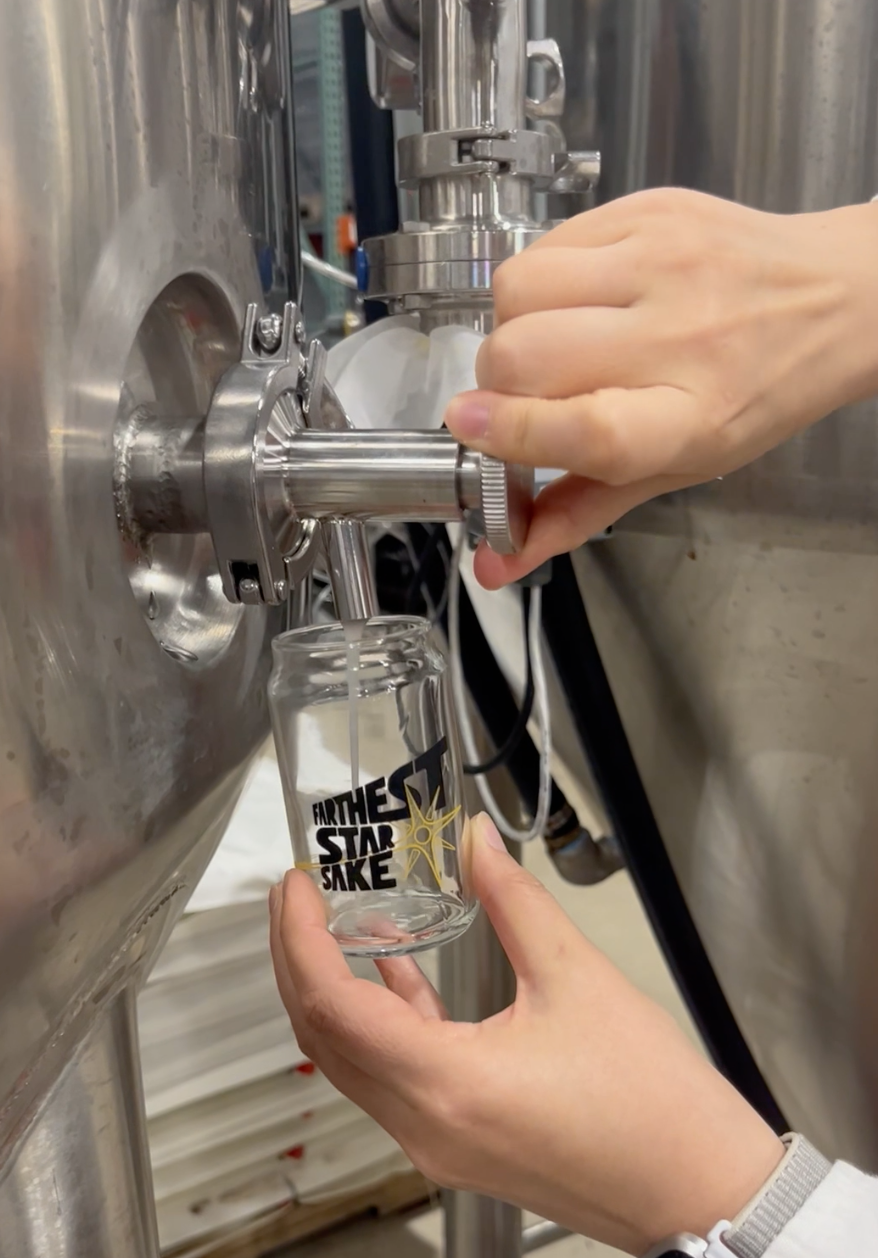
There’s nothing fresher than nama sake straight from the tank! We were allowed to taste some at Farthest Star Sake in Medfield, Massachusetts. | Photo by Taylor Markarian.
Nama sake is known as “raw sake” because it allows this activity to continue. It is therefore not as shelf stable, and requires refrigeration and relatively quick consumption to enjoy as intended. However, the benefit of skipping pasteurization is that the sake tastes brighter, fresher and livelier. Some say that this is a truer expression of Japan’s national beverage.
For these reasons, many nama sake are seasonal sake released in limited quantities, like bottled moments in time. There are many Japanese terms for seasonal sake depending on exactly when they are released, including “hiyaoroshi” (autumn sake), “natsuzake” (summer sake) and “hatsushibori” (“first squeeze” winter/spring sake), among others. As you’d expect, seasonal sake often pair well with seasonal foods; summer sake with summer fruits and veggies such as cucumber and melon, autumn sake with pumpkin, sweet potato and heartier dishes, etc.
How is sake pasteurized?
The pasteurization stage of the brewing process is called “hi-ire.” There are a few ways to heat pasteurize sake, such as running sake through heated pipes or giving bottled sake a hot water bath. The sake must reach a temperature of around 150 F to stop the enzymatic activity. Sake is kept at this temperature for about 30 minutes.
What’s the difference between namanama, namachozo and namazume?
There are three types of namazake: namanama, namachozo and namazume. The differences lie in which rounds of heat pasteurization are omitted. Namanama skips both rounds, namachozo skips the first round, and namazume skips the second.
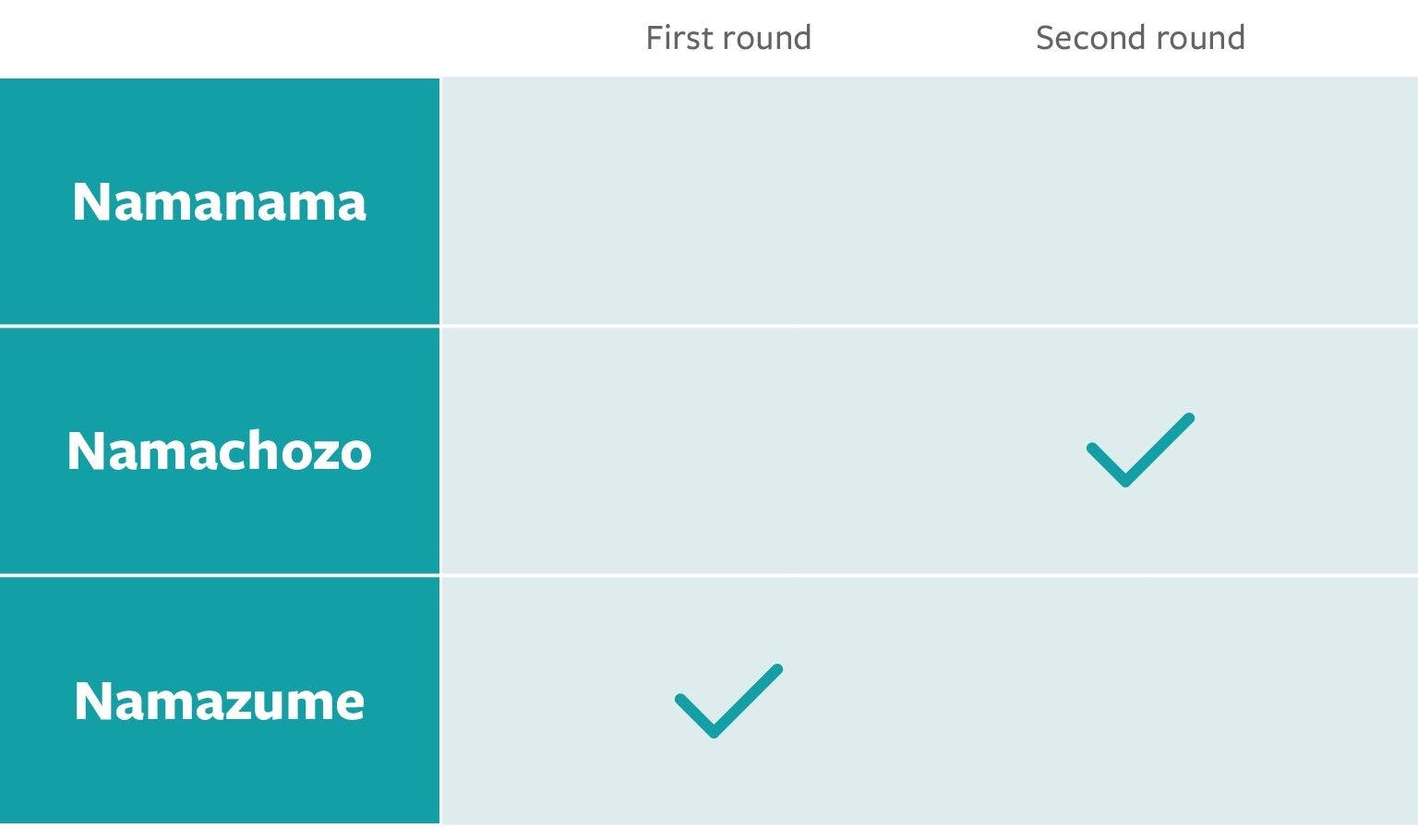
Namanama sake
While people often use the term nama sake to mean any type of unpasteurized sake, namanama is the only one that is 100% unpasteurized. Of the three types of nama sake, this type offers the most expressive flavors, often with heightened acidity.
The first commercially available nama, Kikusui “Funaguchi,” was released in the 1970s by Kikusui Brewing Company. It’s also a “genshu,” or undiluted sake. Many breweries that release unpasteurized sake also choose to skip the water dilution step (“warimizu”) to keep the ABV a little higher and the flavor that much bolder. Again, this is in pursuit of the most “pure” sake. Another famous nama genshu is Narutotai “Ginjo” Nama Genshu by Honke Matsuura, which actually appeared in the movie “Blade Runner 2049.”
Namachozo sake
Namachozo sake skips the first round of pasteurization, but does undergo pasteurization after aging. This allows the sake to retain bright, fresh flavors, albeit slightly more mild than completely unpasteurized sake.
Interestingly, all of the sake Tippsy carries from Yaoshin Brewing Company is namachozo, so exploring their Gangi brand would be a great way to familiarize yourself with this style. According to the brewery, they aim to “make sake for sake lovers,” and consider namachozo the ideal style for doing just that.
Namazume sake
Namazume is the opposite of namachozo, in that namazume is pasteurized after pressing (first round) but not after aging (second round). Many hiyaoroshi are namazume, as brewers find that pasteurizing this way retains a certain freshness while carrying a more matured flavor profile appropriate for the harvest season.
How to store and serve nama sake
You should always try to drink sake as the brewers intended. Because this type of sake offers fresher but rather short-lived flavors, most nama should be kept refrigerated even prior to opening. Once opened, it should be consumed relatively quickly — within a few days. Also note that due to the slight natural fizz that some nama have, the top may pop off on its own once it has been put back on after being opened, so be careful when you store it or transport it to avoid spillage.
The majority of nama should be served chilled or room temperature, with a few exceptions. Some hiyaoroshi, for instance, possess more robust flavors that can stand up to heating. Due to its higher ABV and stronger flavor profile, many nama genshu can also be served over ice, since the ice cubes won’t excessively water down the flavor when they melt.
Head on over to our Sake Guide for more advice on how to store and serve sake.
How to choose the right nama sake for you
At Tippsy, we’re lucky to have a varied collection of nama, namachozo and namazume. You might be thinking, “This stuff sounds awesome! Which one should I try first?” Fortunately for you, each product page on our website details the item’s tasting notes, temperature recommendations, food pairing suggestions and more useful information. You can take your time browsing through each collection, but for convenience, we’ll also list a few tried and true nama sake staples for you here.
Gasanryu “Kisaragi”
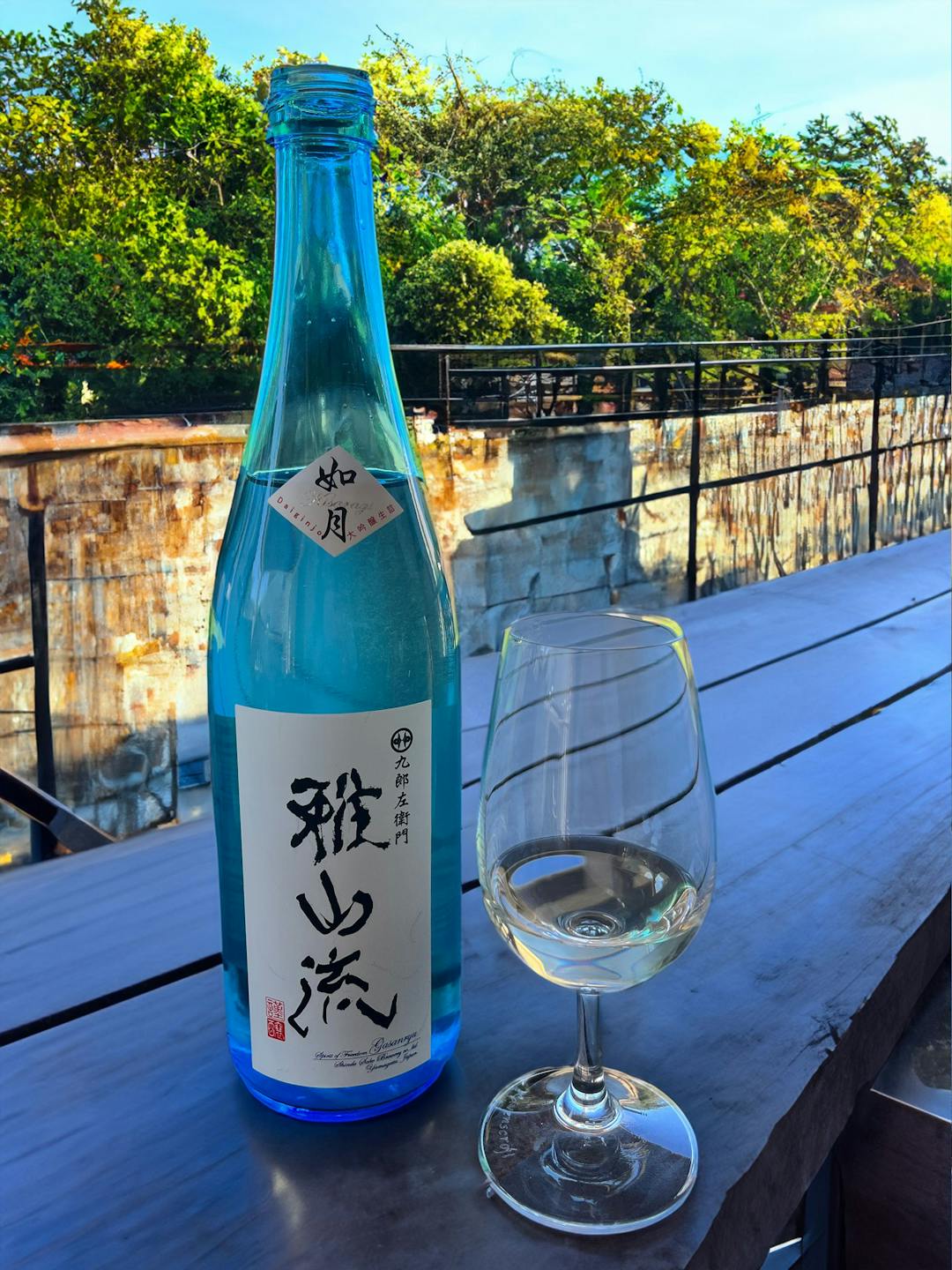
Price: $$
This daiginjo by Shindo Brewing Company, a brewery that also produces various other nama sake, is impeccably smooth. Its enchantingly soft mouthfeel instantly whisks me away to a gently flowing mountain stream, surrounded by the peace and quiet of nature. In addition to its supple texture, Gasanryu “Kisaragi” has an aroma of pear, melon and rice on the nose, with the same flavors carrying through on the palate.
For a nama sake, it’s surprisingly mellow, but that’s likely due to the fact that it’s actually a namazume, which skips the second round of pasteurization. With a 50% RPR, it’s also rather refined, and it has 14% ABV, which is slightly lower than the average of 15% to 16%. There is, however, a slight sharpness to this light, dry, unfiltered sake, just to keep you on your toes.
Kikusui “Funaguchi” Sparkling
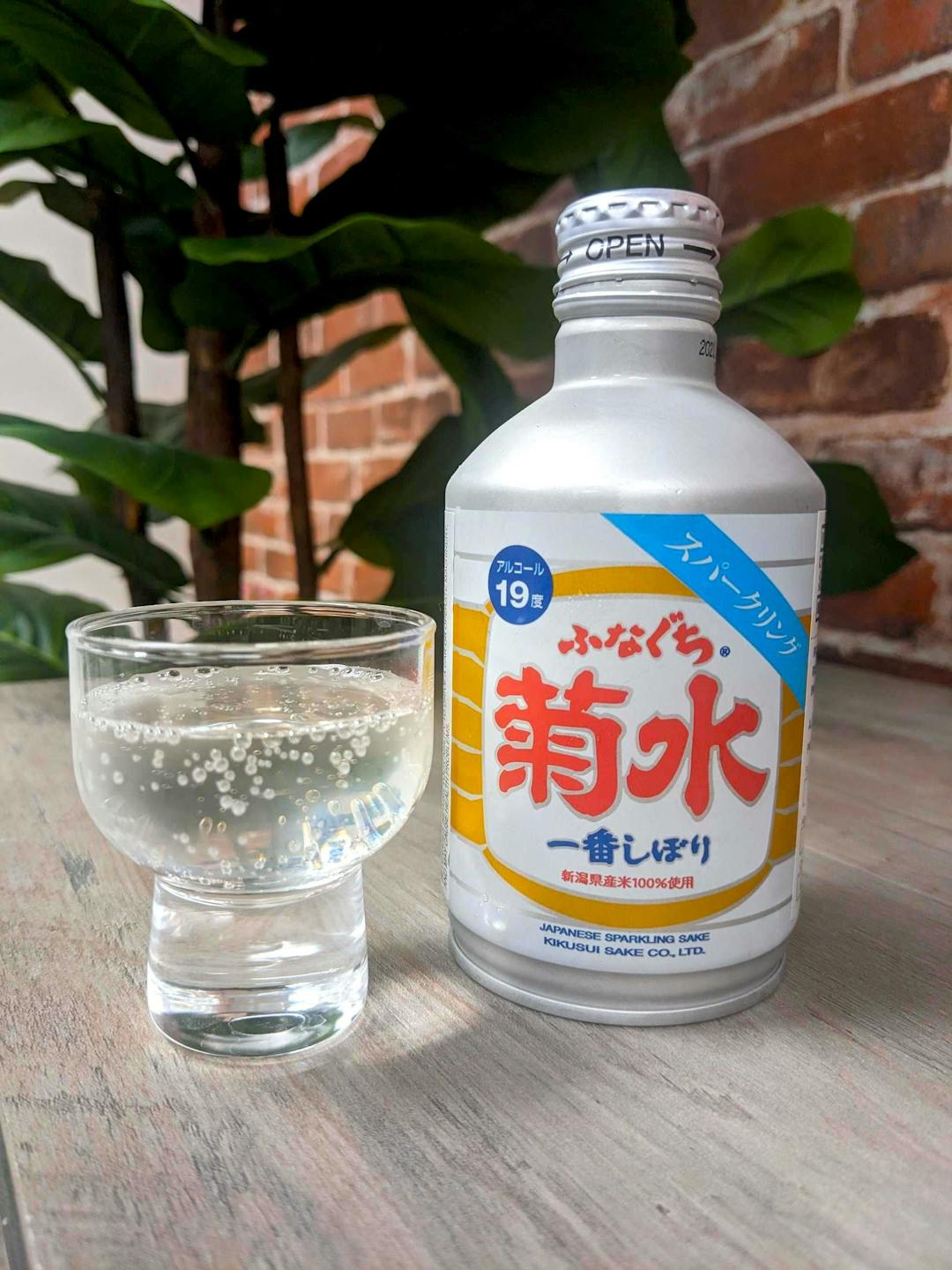
Price: $
This honjozo nama genshu is a sparkling version of the original, iconic Kikusui “Funaguchi.” It comes in what looks like a water bottle, but you definitely shouldn’t chug it like one! This undiluted, unpasteurized sake clocks in at 19% ABV, which delivers a big punch in terms of alcohol content. Its 70% RPR also endows it with strong flavor. Combined with its natural flavors of lemon and rice, Kikusui “Funaguchi” Sparkling is excellent when served on the rocks with a slice of fresh lemon. This sake’s big personality can take on hefty meats, so try pairing it with a pub style burger with cheddar or Gouda cheese.
Amabuki “Himawari”

Price: $$
“Himawari” translates to sunflower, and this junmai ginjo truly lives up to its name, from its friendly yellow and brown label to its bright yet soothing flavor profile, even down to the sunflower yeast with which it’s made. Amabuki Brewing Company is famous for isolating and using different kinds of flower yeasts in their sake, and “Himawari” achieves the natural impression and sunny disposition they were looking for. With a faint hint of watermelon on the nose, this nama sake brings to mind a sun-soaked day at the beach.
As advertised, “Himawari” has a very floral taste profile, and with an SMV of +7 it’s notably dry. This sake has a 55% RPR and a slightly higher ABV at 16.5%, but the taste of alcohol doesn’t overpower its other tasting notes. I’d pair this junmai ginjo with a light and refreshing summer salad.
Narutotai “Ginjo” Nama Genshu
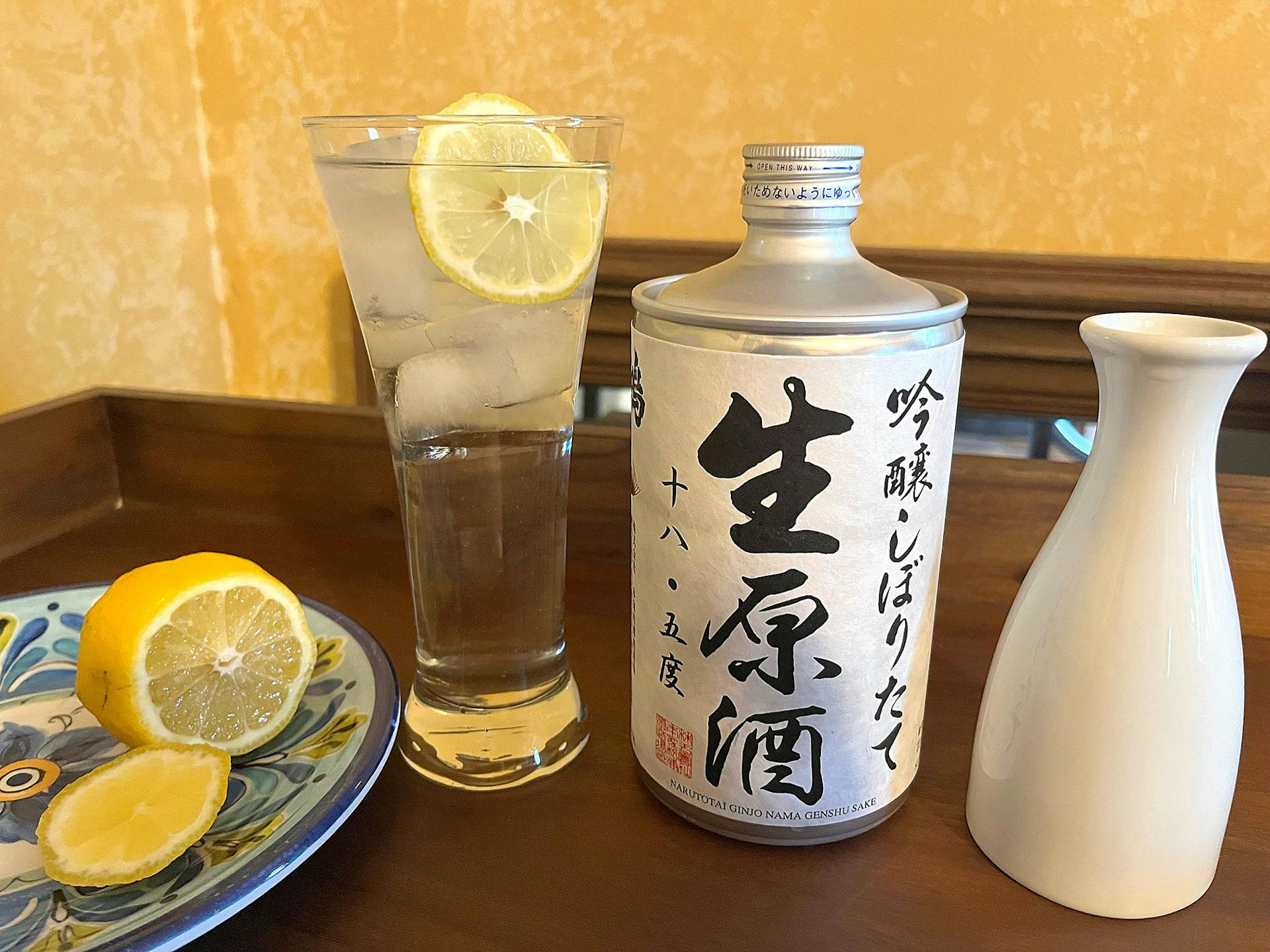
Price: $$
Probably one of if not the most recognizable sake bottles in the world, this canteen-like aluminum vessel works to keep the nama sake fresh and unharmed by light. It also just looks really cool, if we’re being honest. A genshu with 18.5% ABV, this Narutotai sake has a strong, uncompromising flavor marked by notes of fennel, cashew and rice. It’s bright and a little bit bitter, and can be enjoyed either chilled or on the rocks. It has a 58% RPR.
One fun way to serve Narutotai “Ginjo” Nama Genshu is “kan-rokku” style; literally, heated and on the rocks. Sounds counterproductive, right? But warming the sake actually has the effect of mellowing the flavor a little, and pouring it over ice not only creates an impressive steam effect, but chills it so it can be enjoyed the way it was ultimately intended. Try this fun sake trick at home!
Nihonsakari “Fuga”
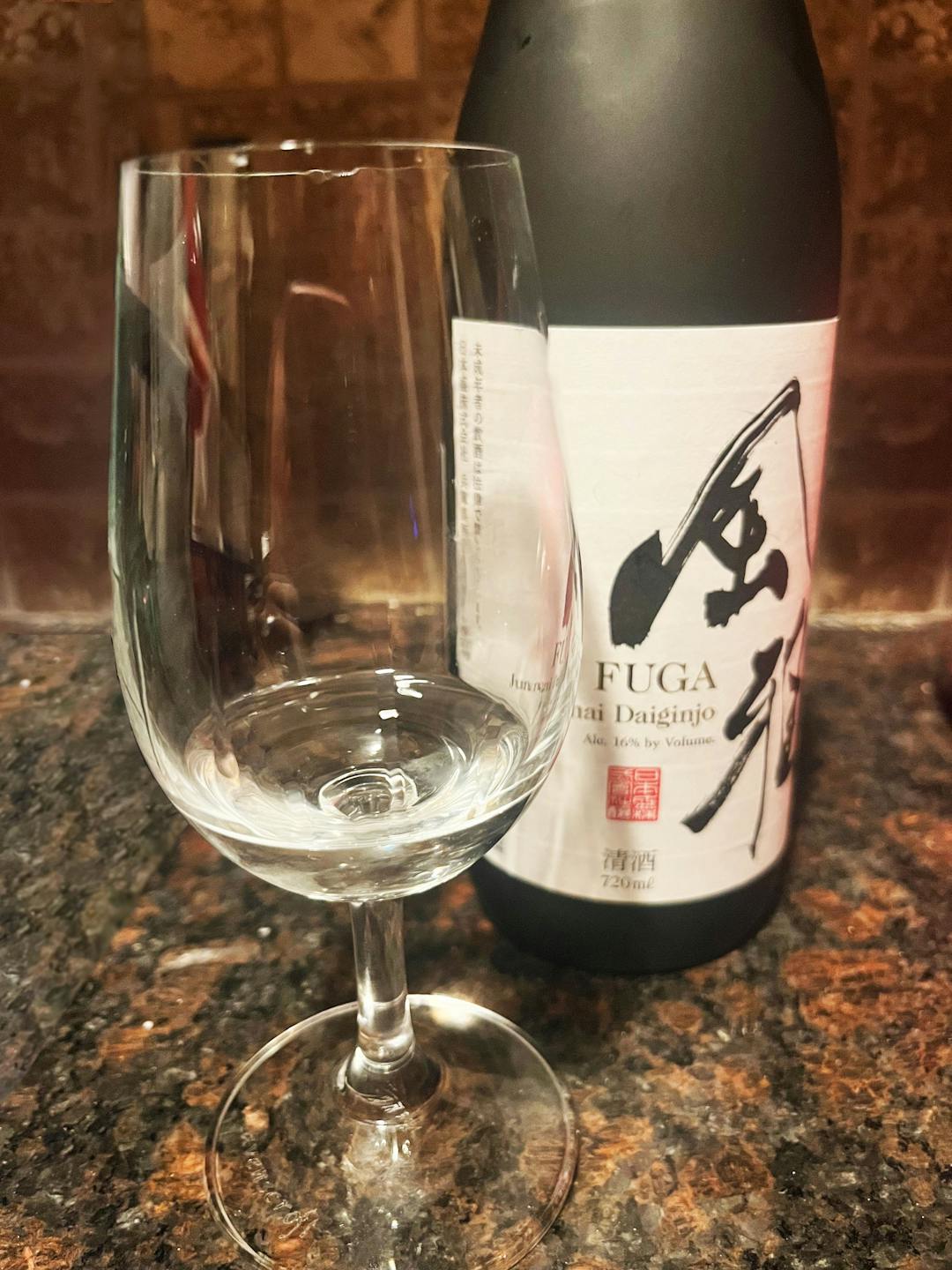
Price: $$$
“Fuga” is a fantastic representation of Japanese sake. A junmai daiginjo with a 40% rice polishing ratio, this namachozo radiates sophistication from its bottle to its taste. It’s confident, simple and graceful with clean yet robust flavors of melon and apple. Aside from the fact that it’s a nama, it’s also just a solid example of a classic junmai daiginjo, with an ABV of 16% (the average alcohol content for sake). Savor it alongside sashimi or a nice cheese board.
A raw look at sake
“Nama” means raw, and for many brewers, this is the purest form of sake. While pasteurized sake is more shelf-stable, there is a belief that unpasteurized (as well as undiluted and unfiltered) sake is the truest expression of Japan’s national beverage. With seasonal sake especially, brewers can capture the flavors of the moment; a precious, fleeting joy. Somehow, knowing that you might not be able to taste this sake again makes it all the more pleasurable.
Opening a bottle of limited edition nama sake is a fun, exciting experience for the curious. My personal favorite from the summer nama released in 2023 is Kisoji “Natsujun” by Yukawa Brewing Company, with its delicious notes of grape, pear and cotton candy.
Whether it’s a nama that is reliably released on a regular basis, or a seasonal limited edition, we highly recommend you try this unique category of sake! And if you get a chance to have it fresh from a brewery in Japan or even the United States, you should seize the opportunity.
Check out our Sake Guide for more sake recommendations.
Resources
Ashcraft, Brian. “The Japanese Sake Bible.” Tuttle Publishing, 2020.
“Sake Adviser Certificate Course.” Sake School of America, 2020.

Taylor Markarian
Taylor Markarian is a culture journalist whose work spans the food and beverage, entertainment and travel industries. She is passionate about world travel and learning about different lifestyles and subcultures across the globe. Markarian is also the author of “From the Basement: A History of Emo Music and How It Changed Society” (Mango Publishing, 2019). Explore her work by visiting her portfolio.
Learn about Tippsy’s Editorial process
Recent posts
All about sake
Sign up to receive special offers and sake inspiration!
